Deformation Texture of Bulk Cementite Investigated by Neutron Diffraction
Abstract
1. Introduction
2. Materials and Methods
3. Results and Discussion
3.1. Texture of Bulk Cementite before Compression Test
3.2. Evolution of Deformation Texture in Bulk Cementite by Compression
4. Conclusions
Author Contributions
Funding
Institutional Review Board Statement
Informed Consent Statement
Data Availability Statement
Acknowledgments
Conflicts of Interest
References
- Li, Y.J.; Choi, P.; Goto, S.; Borchers, C.; Raabe, D.; Kircheim, R. Evolution of strength and microstructure during annealing of heavily cold-drawn 6.3 GPa hypereutectoid pearlitic steel wire. Acta Mater. 2012, 60, 4005–4016. [Google Scholar] [CrossRef]
- Marder, A.R.; Bramfitt, B.L. The effect of morphology on the strength of pearlite. Metall. Trans. A 1976, 7, 365–372. [Google Scholar] [CrossRef]
- Tomota, Y.; Lukas, P.; Neov, D.; Harjo, S.; Abe, Y.R. In situ neutron diffraction during tensile deformation of a ferrite-cementite steel. Acta Mater. 2003, 51, 805–817. [Google Scholar] [CrossRef]
- Fasiska, E.J.; Jeffrey, G.A. On the cementite structure. Acta Cryst. 1965, 19, 463–471. [Google Scholar] [CrossRef]
- Litasov, K.D.; Rashchenko, S.V.; Shmakov, A.N.; Palyanov, Y.N.; Sokol, A.G. Thermal expansion of iron carbides, Fe7C3 and Fe3C, at 297–911 K determined by in situ X-ray diffraction. J. Alloys Compd. 2015, 628, 102–106. [Google Scholar] [CrossRef]
- Wood, I.G.; Vocadlo, L.; Knight, K.S.; Dobson, D.P.; Marshall, W.G.; Price, G.D.; Brodholt, J. Thermal expansion and crystal structure of cementite, Fe3C, between 4 and 600 K determined by time-of-flight neutron powder diffraction. J. Appl. Cryst. 2004, 37, 82–90. [Google Scholar] [CrossRef]
- Inoue, A.; Ogura, T.; Masumoto, T. Transmission electron microscope study on deformation and fracture of cementite in cold-rolled steels. Trans. Jpn. Inst. Met. 1976, 17, 149–157. [Google Scholar] [CrossRef][Green Version]
- Umemoto, M.; Liu, Z.G.; Takaoka, H.; Sawakami, M.; Tsuchiya, K.; Masuyama, K. Production of bulk cementite and its characterization. Metall. Mater. Trans. A 2001, 32, 2127–2131. [Google Scholar] [CrossRef]
- Umemoto, M.; Todaka, Y.; Takahashi, T.; Li, P.; Tokumiya, R.; Tsuchiya, K. High temperature deformation behavior of bulk cementite produced by mechanical alloying and spark plasma sintering. Mater. Sci. Eng. A 2004, 375–377, 894–898. [Google Scholar] [CrossRef]
- Umemoto, M.; Liu, Z.G.; Masuyama, K.; Tsuchiya, K. Influence of alloy additions on production and properties of bulk cementite. Scr. Mater. 2001, 45, 391–397. [Google Scholar] [CrossRef]
- Umemoto, M.; Kruger, S.E.; Ohtsuka, H. Ultrasonic study on the change in elastic properties of cementite with temperature and Mn content using nearly full density polycrystalline bulk samples. Mater. Sci. Eng. A 2019, 742, 162–168. [Google Scholar] [CrossRef]
- Adachi, N.; Ueno, H.; Onoe, K.; Morooka, S.; Todaka, Y. Hydrogen permeation property of bulk cementite. ISIJ Int. 2021, 61, 2320–2322. [Google Scholar] [CrossRef]
- Lutterotti, L.; Matthies, S.; Wenk, H.R.; Schultz, A.J.; Richardson, J. Combined texture and structure analysis of deformed limestone from neutron diffraction spectra. J. Appl. Phys. 1997, 81, 594–600. [Google Scholar] [CrossRef]
- Mises, R.V. Mechanik der plastischen Formänderung von Kristallen. Z. Angew. Math. Mech. 1928, 8, 161–185. [Google Scholar] [CrossRef]

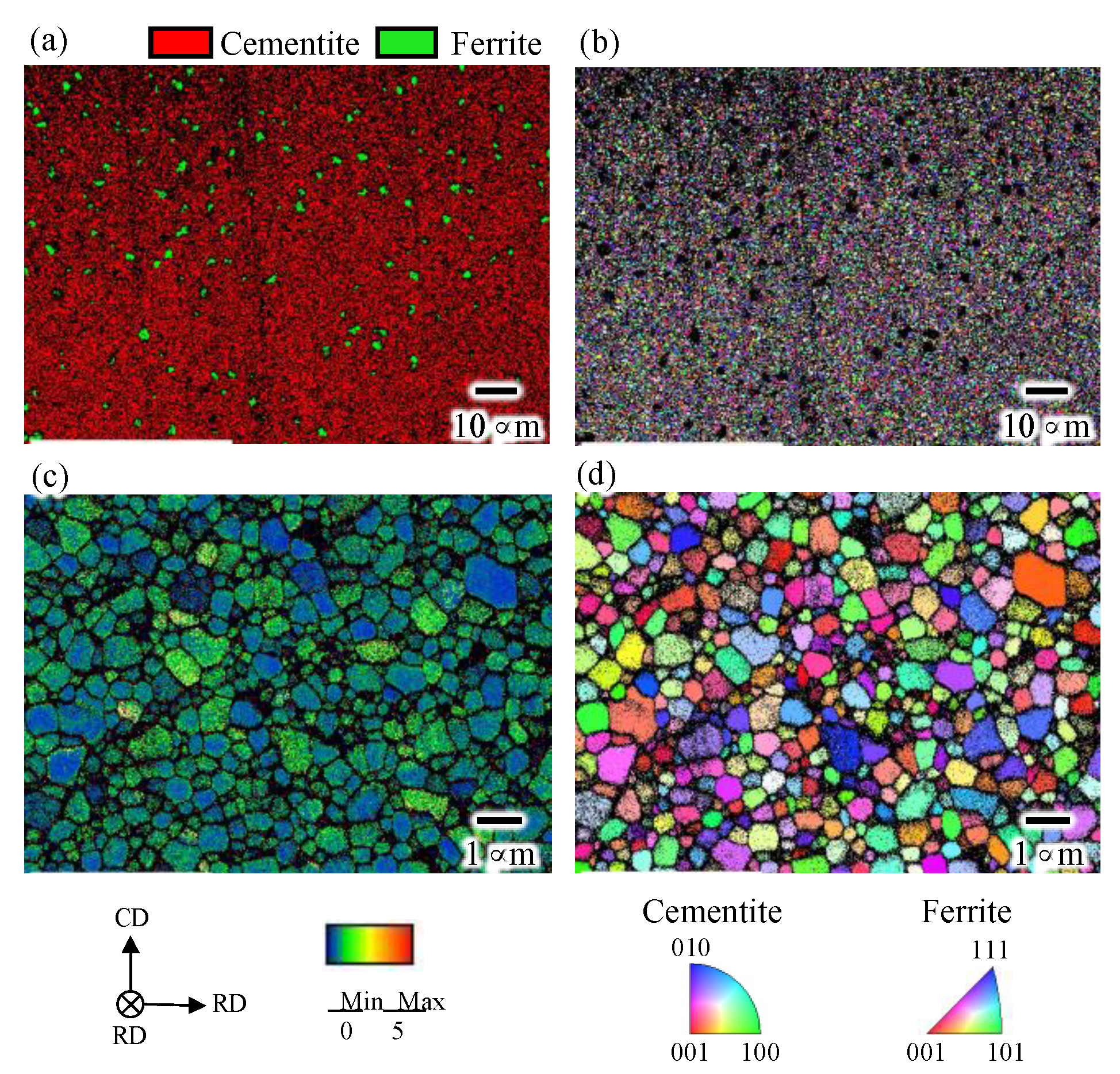

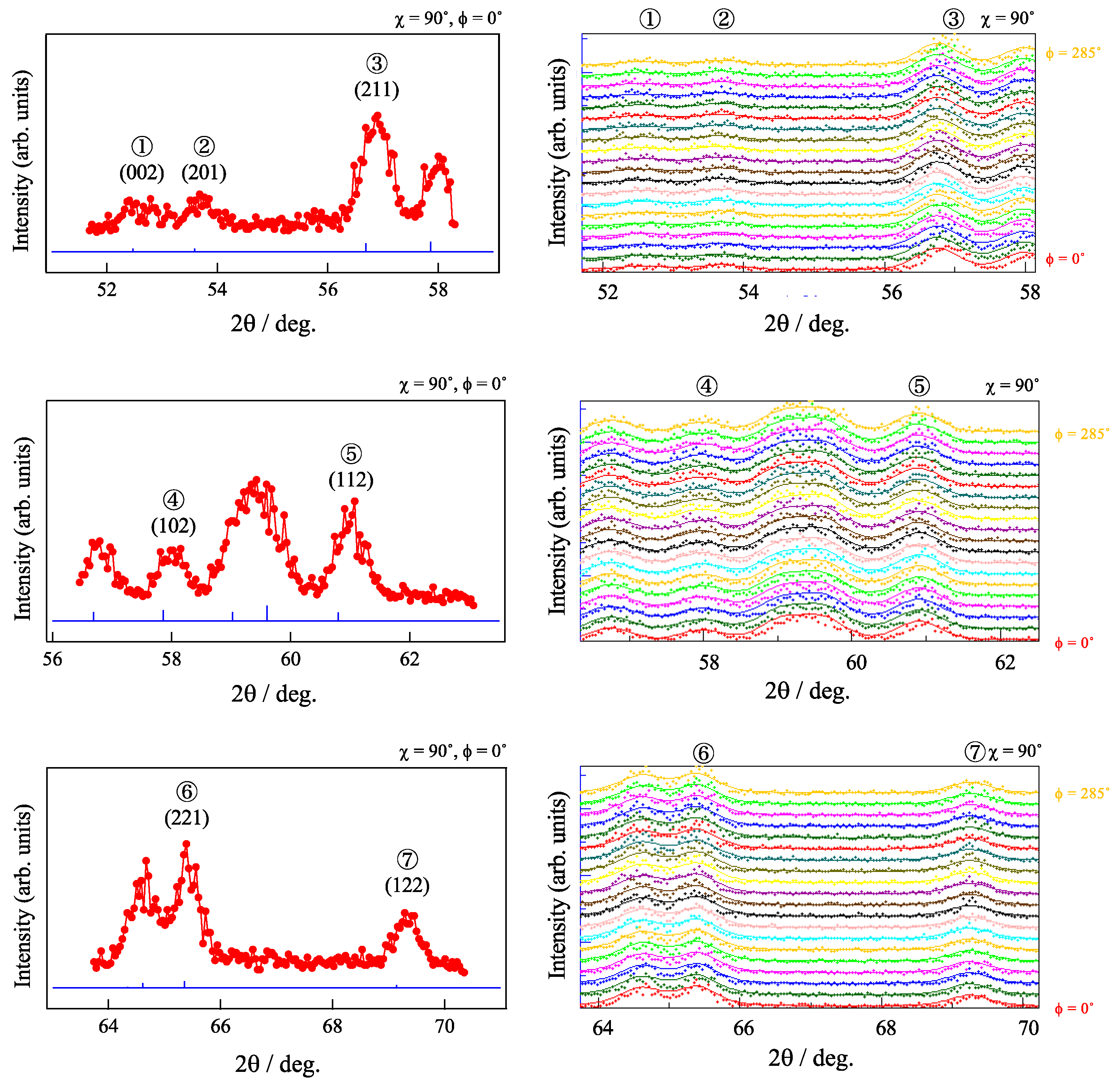
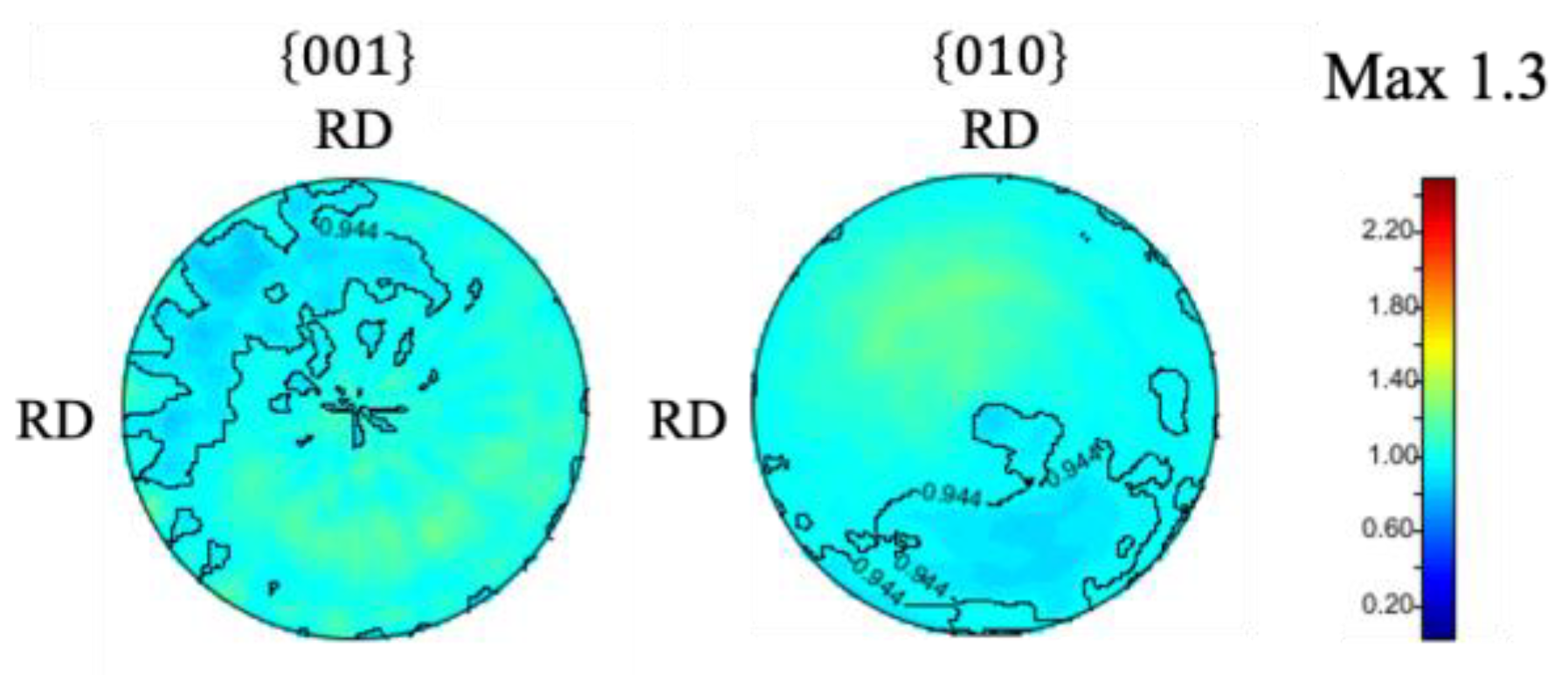
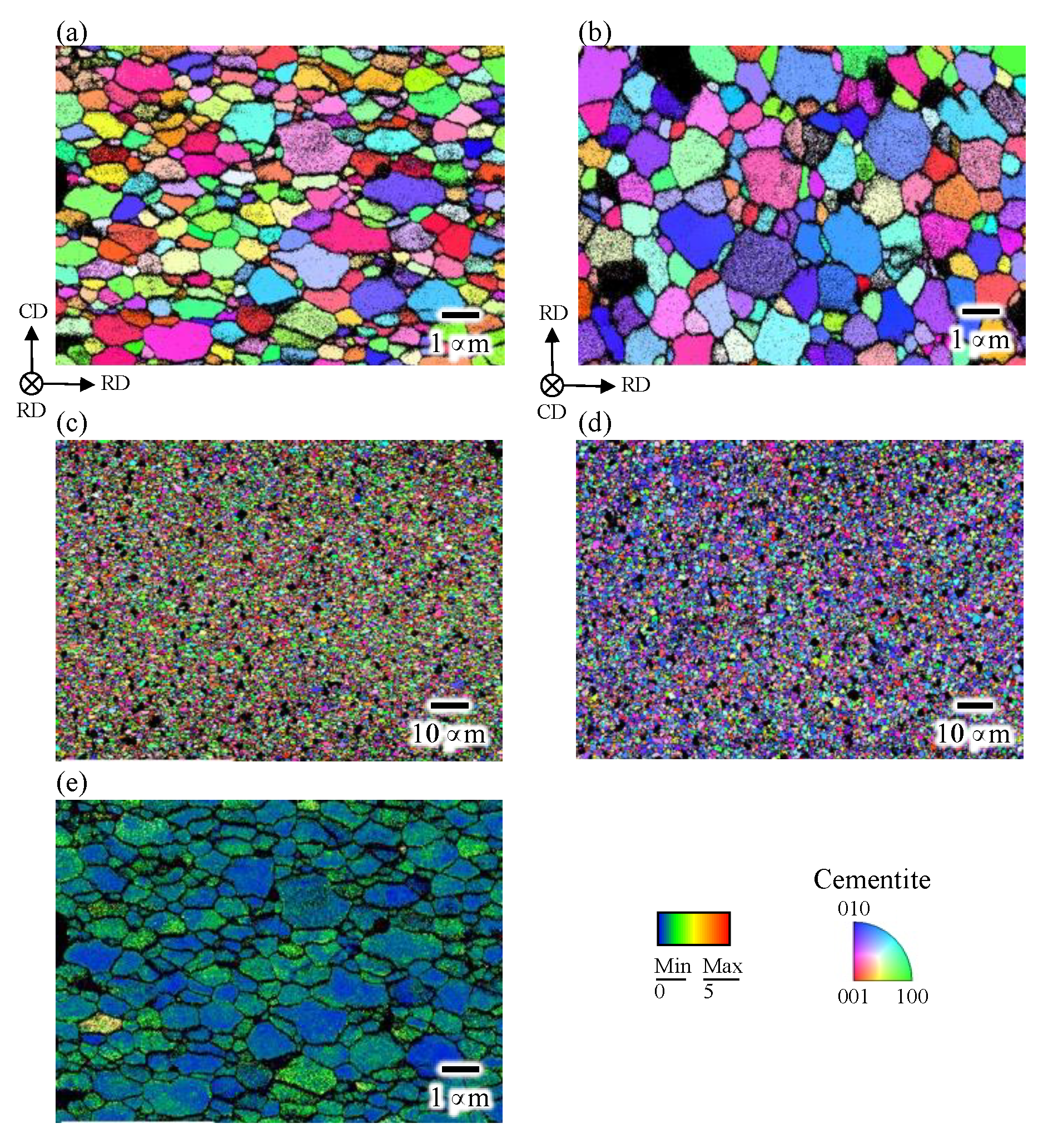

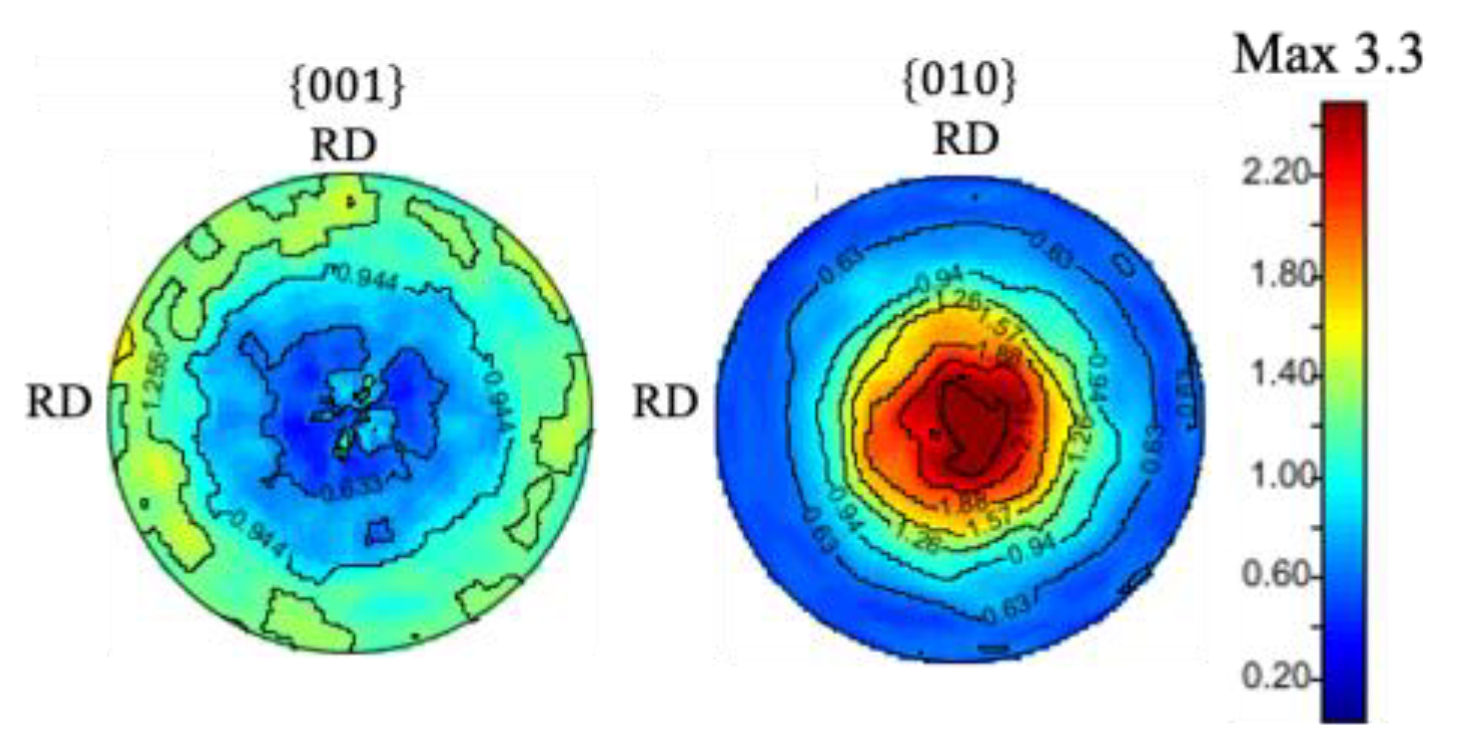
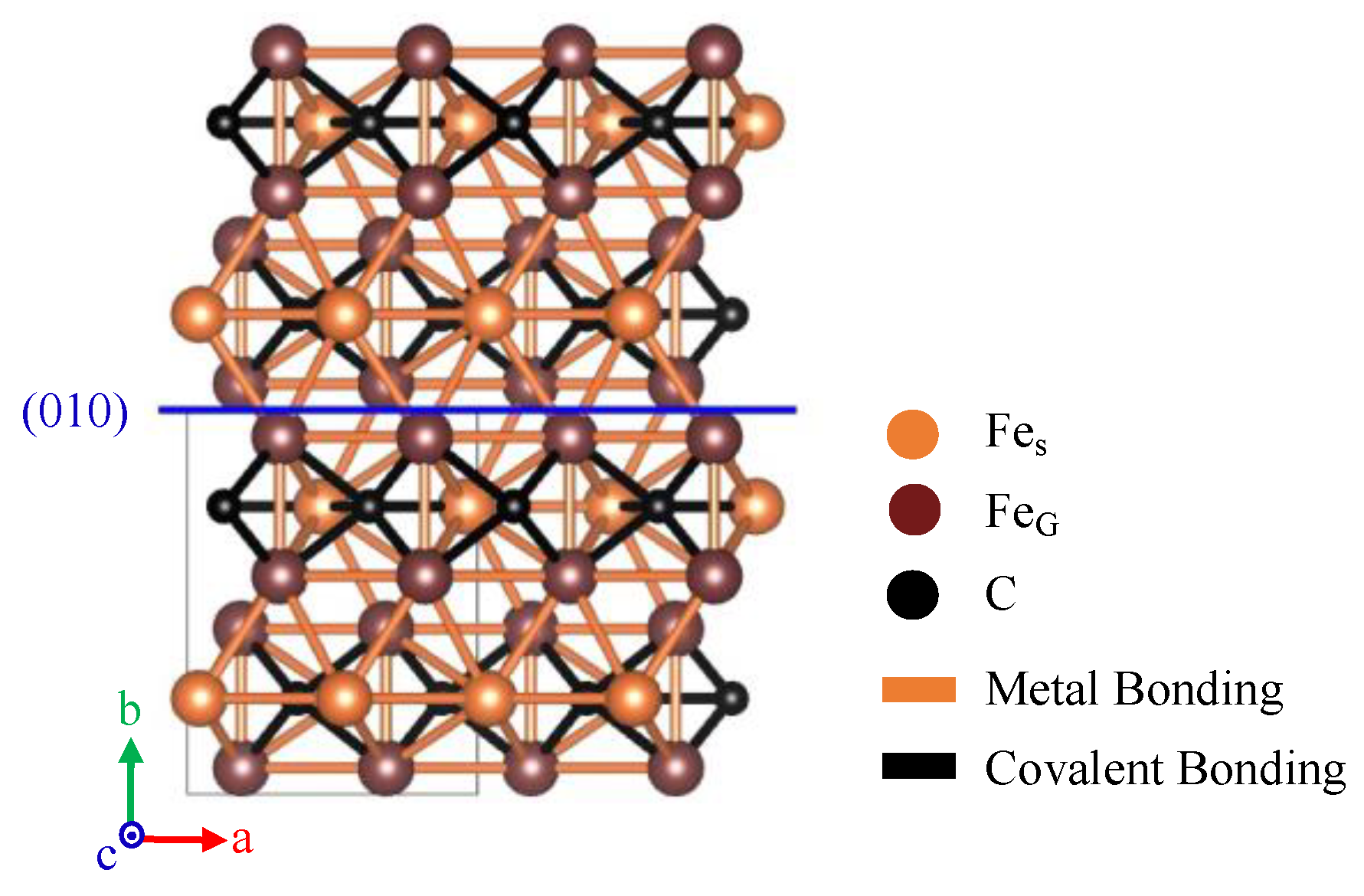
| Milling Receptacle | JIS SUS304 Stainless Steel (Inner Diameter ϕ128 mm, Volume 1.7 L) |
|---|---|
| Milling media | JIS SUJ2 Bearing Steel ball (Diameter ϕ25 mm) |
| Milling media weight | 3800 g |
| Powder weight | 38 g |
| Milling time | 360 ks |
| Rotation speed | 95 rpm |
| Atmosphere | Ar |
Publisher’s Note: MDPI stays neutral with regard to jurisdictional claims in published maps and institutional affiliations. |
© 2022 by the authors. Licensee MDPI, Basel, Switzerland. This article is an open access article distributed under the terms and conditions of the Creative Commons Attribution (CC BY) license (https://creativecommons.org/licenses/by/4.0/).
Share and Cite
Adachi, N.; Ueno, H.; Morooka, S.; Xu, P.; Todaka, Y. Deformation Texture of Bulk Cementite Investigated by Neutron Diffraction. Materials 2022, 15, 4485. https://doi.org/10.3390/ma15134485
Adachi N, Ueno H, Morooka S, Xu P, Todaka Y. Deformation Texture of Bulk Cementite Investigated by Neutron Diffraction. Materials. 2022; 15(13):4485. https://doi.org/10.3390/ma15134485
Chicago/Turabian StyleAdachi, Nozomu, Haruki Ueno, Satoshi Morooka, Pingguang Xu, and Yoshikazu Todaka. 2022. "Deformation Texture of Bulk Cementite Investigated by Neutron Diffraction" Materials 15, no. 13: 4485. https://doi.org/10.3390/ma15134485
APA StyleAdachi, N., Ueno, H., Morooka, S., Xu, P., & Todaka, Y. (2022). Deformation Texture of Bulk Cementite Investigated by Neutron Diffraction. Materials, 15(13), 4485. https://doi.org/10.3390/ma15134485








